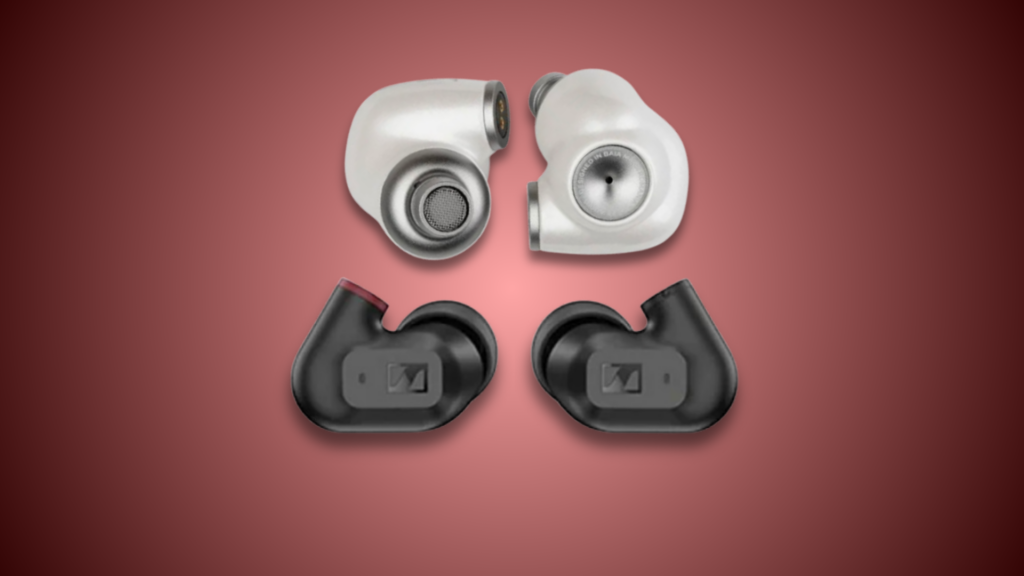In-ear monitors are a fantastic piece of audio equipment. For people looking to upgrade from regular wired earphones, IEMs are the next step. Luckily, great options are not as expensive as a preliminary search may show. There are quite a few options for people looking to upgrade to high fidelity audio without breaking the bank. In the $150 range, there are two great options: the Alba from Meze Audio and the IE 200 from Sennheiser. Today, we take a look at the two side by side and see how they compare being at the same price point.
What’s In The Box
| Meze Alba — $159.00 | Sennheiser IE 200 — $149.95 |
|
|
Aesthetics and Functionality
These two monitors have quite different aesthetics. The Sennheiser IE series is a signature look, and the IE 200 follows the pattern of a small grey body with a durable wire. Since it’s on the smaller side, and I found that wearing the bigger ear tip was necessary to getting the correct fit. The Alba, on the other hand, sports an all white design with silver details for the logo and edges. The white braided wire was easy to loop around the ear and was comfortable to wear. It is a bigger IEM, but not overly large like some others. Fitting it into the ear was easy and it fit right in the ear canal. Upon wearing both, I preferring the snug fit of the Alba as opposed to the IE 200, where I had to keep adjusting it to get the right fit.
Each of the IEMs came with a 3.5mm termination, so I was able to easily plug them into any portable DAC/Amp and begin listening. I used the FiiO KA11 portable DAC connected to my computer when listening. Both IEMs worked flawlessly with little to no additional setup time needed.

Tech Specs
| Meze Alba | Sennheiser IE 200 |
|
|

Listening Review
Soundstage
Both of these monitors have a wide soundstage. They are expansive and immersive, letting you fully picture the audio world in front of you. The IE 200 has a wide soundstage that stays mainly frontal, while the Alba wraps around your head a little more. Both have precise stereo imaging, and the immersive quality is not lost. The Alba is a bit more dynamic than the IE 200, with a frequency range that expands out just a little more. The sound signature of the Alba favors the bass, and the IE 200 favors the treble. This different tuning still makes tracks colorful and entertaining to listen to.
Low Frequencies
The Alba impresses with its bass response. It is punchy and driving, effective in a plethora of genres. The IE 200 has an excellent bass response as well, but Sennheiser’s signature sound makes these lose the effect the Alba has. The balance between frequencies causes the IE 200 to lose out on some of its bass response, and it leans towards a brighter bass than a heavy one like the Alba. Because of how they are worn, IEMs have a lot of bass response because of the seal that comes with covering the ear canal. Sometimes this can cause IEMs to be too bassy or deep, but that wasn’t the case with either of these monitors. You get two earthy low ends and enough clarity and detail to eliminate muddiness as a worry.
Mid-Range Frequencies
There is a lot of clarity in both of these IEMs for this range. Layers of sound were clearly heard, with a lot of color and detail. I liked how distinct the layers were in the Alba, and how this range seemed to pop out above the rest as opposed to the flatter signature of the IE 200. Despite having the flatter response, the sound reproduction and attention to detail was more notable on the IE 200. All the detail did not become muddy or overwhelming in either IEM. I appreciated the vocal response in both of these monitors, coming up and taking center stage in a lot of mixes. It made everything else fall into place and the listening experience was never boring.
High Frequencies
The high frequencies come in as an excellent balance to the lows in both monitors. This balance was more starkly noticed in the Alba, since the bass response was very strong. It didn’t get lost in the strong bass and instead was welcomed as a competitor for center stage. The treble was bright and colorful in the IE 200 as well, and it was the most noticeable section of the frequency range. Even though it was the main feature of the IE 200, the high end was not overwhelming or piercing. It was airy and light, allowing the sound isolation that comes with IEMs to work as an extra push for the bass.

Summary
At the end of the day, both of these IEMs are excellent choices. The Alba gives you a dynamic and entertaining listening experience, uncompromising in its quality across the board. The IE 200 is a very balanced and relaxed listen, allowing you to ease your way into the world of IEMs. If I were to choose one of these, I would probably go for the Alba because of its more distinct character and comfortability. Still, I would not hesitate to recommend the IE 200 to any person looking for a quality in-ear monitor on a budget.
You can purchase the Sennheiser IE 200 and Meze Alba today from Audio46.


